Story developed using data from Mining Intelligence. Learn more and schedule a demo.
Have you ever wondered which mines are blasting, shovelling and hauling the most expensive ore? While the world’s highest-value minerals are well known – this list includes precious metals and gemstones – it is more practical for mining industry stakeholders to estimate the value of minerals by looking through the lens of a mining operation. Simply put, what is the worth of an excavator/ loader bucket at a particular open pit or underground mine compared to its peers in the industry?
InfoMine’s IntelligenceMine database has a powerful tool that allows users to get a quick reserves/resources valuation based on the most recent estimates of reserves/resources and commodity prices updated on a daily basis.
The following analysis covers those currently active mining operations throughout the world that are separate reporting units and which have most recent reserves evaluation figures disclosed by the owners/operators after December 31, 2014.
Why are only reserves taken into account? Because a mineral reserve is the most accurate economic estimate of a mine’s mineral resources, which can be justified under current market conditions. Therefore, ore reserves are far less speculative than ore resources and relatively precisely reflect changes in the economic “wellbeing” of mines.
In this case analysis is limited to mining operations where ore reserves have been calculated according to international standards adopted by major stock exchanges for public reporting of mineral exploration results.
 Source: IntelligenceMine
Source: IntelligenceMine

Cigar Lake underground uranium mine, Saskatchewan, Canada. Source: Cameco.com
The Athabasca sedimentary basin, located predominantly in Canada’s Saskatchewan province, contains the world’s highest-grade “unconformity” bonanza-type uranium deposits. Despite record low spot uranium prices, Cameco Corp’s Cigar Lake mine grabs first place in this ranking, boasting remarkable USD$8,430 of uranium contained in one tonne of ore reserves. With ~17% U3O8 grade in reserves, Cigar Lake is also the world’s highest grade uranium mine.
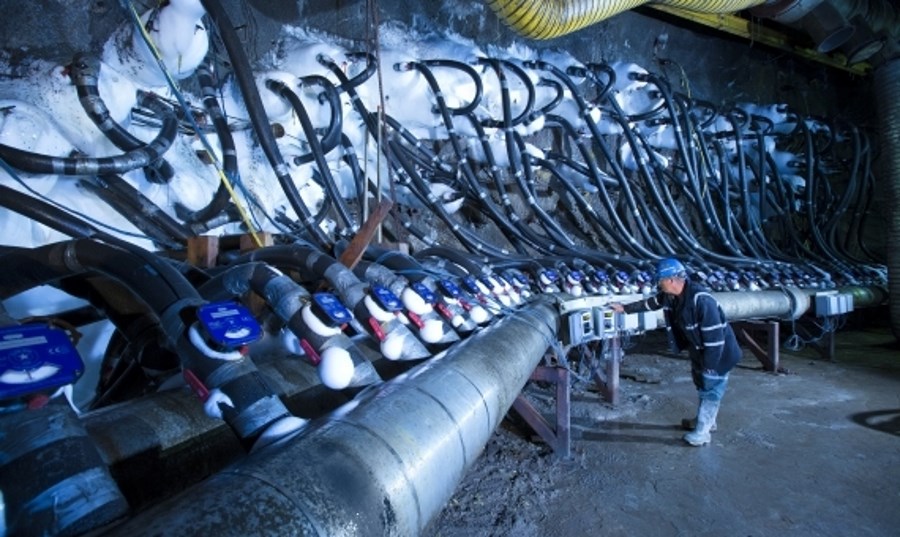
McArthur River uranium mine, Canada. “Snowmen” circulate a brine that keeps the porous rock surrounding the orebody frozen. Source: Cameco.com
Another of Cameco’s underground mines, McArthur River, is the world’s largest and second highest-grade uranium operation. With one tonne of ore reserves worth USD$5,523, McArthur River mine sits second on our list.

Fire Creek gold mine, Nevada. Source: klondexmines.com
With ~42 g/t of gold in reserves, the Fire Creek mine, owned by Klondex Mines and located in Nevada, United States, is believed to be the highest-grade underground gold mine in the world. With ore reserves valued at USD$1,638/t, Fire Creek is ranked third, well behind Cameco’s uranium champions.

Macassa Mine Complex, Canada. Source: klgold.com
The Macassa Mine Complex in Ontario, Canada, owned by Kirkland Lake Gold Inc., is part of one of Canada’s oldest and richest mineralized systems. The Kirkland Lake Main Break system boasts gold production of 24 million ounces over a span of 86 years with an average historic grade of 16.5 g/t. At USD$883/t of ore, Macassa’s South Mine Complex holds fourth place.
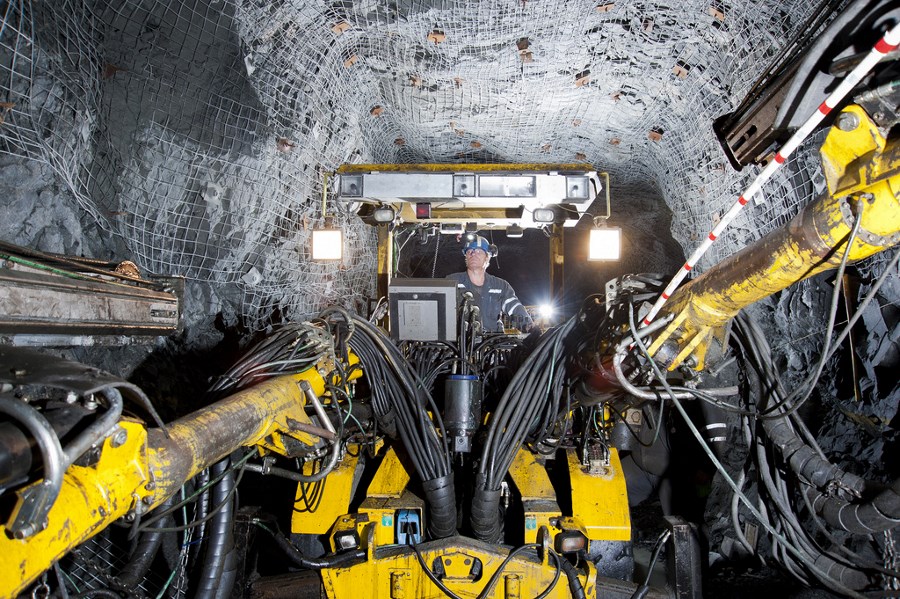
McCreedy underground polymetallic mine, part of KGHM’s Sudbury Operations. Source: kghm.com
KGHM’s Sudbury Operations are located on the western border of the richly-mineralized North Range of the Sudbury Igneous Complex in Ontario, Canada, about 400 km north of Toronto. The Sudbury Complex is a unique geological structure; being the site of a 1.85 billion-year-old meteorite impact crater. Today, Sudbury is one of the most productive mining camps with one of the richest and largest polymetallic deposits in the world. Minerals are extracted by some of the biggest mining companies, including KGHM, Vale and Glencore. Valued at USD$846/t of ore, KGHM’s Sudbury Operations are fifth in this ranking. Ore value is split between gold, nickel, copper, palladium and platinum. This allows a degree of hedging when it comes to commodity price fluctuations, because the prices of precious and base metals are often counter-cyclical.
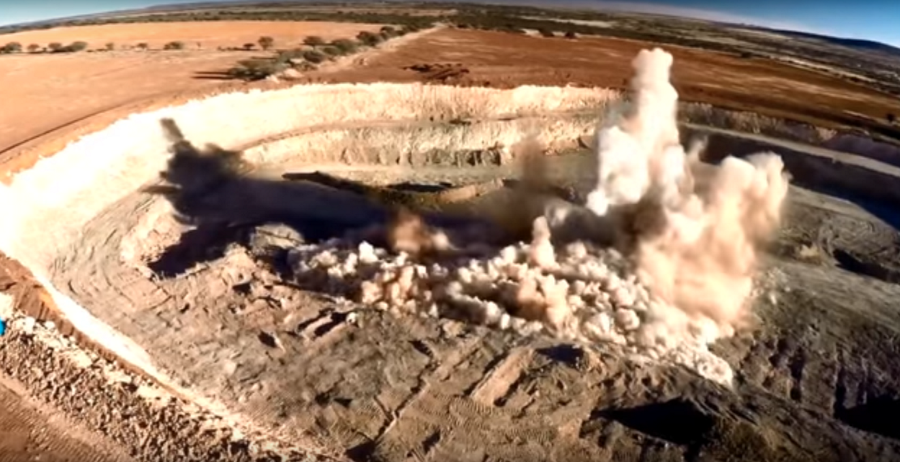
Blasting operations at San Sebastian mine, Durango, Mexico. Source: hecla-mining.com
San Sebastian is Hecla Mining’s newest silver and gold mine, and began mining ore in December 2015. Hecla’s concessions at San Sebastian are located in the middle of the prolific Mexican Silver Belt and cover approximately 42,000 hectares (162 square miles). Hecla operated the underground San Sebastian mine on this property from 2001-05. Mining is currently focused on shallow, near-surface pits on the East Francine, Middle and North veins, targeting high-grade material. The pits are small, extending to a maximum of about 270 feet deep. Near-surface material is weathered and easily excavated. With USD$817/t of ore reserves split between gold and silver, the San Sebastian mine holds sixth place. In addition to exceptionally rich and valuable ores, the relatively low-cost method of mining shallow open pits puts this operation well above its peers.

Khakanja mine and processing facilities, Russia. Source: wikimapia.org
The Avlayakan open-pit gold mine located in the Khabarovsk Region of the Russian Far East is part of Polymetal’s Khakanja gold/silver operations. An interesting fact: Due to the extreme remoteness of Avlayakan, high-grade ore is transported to the Khakanja processing facility by sea and roads – a route encompassing about 1,000 kilometres. In 2012, two barges carrying high-grade gold ore from Avlayakan capsized and sank in the Okhotsk Sea. This open pit mine has a remarkable ~18 g/t gold grade, and with ore reserves valued at USD$770/ t, it is ranked seventh on this list.
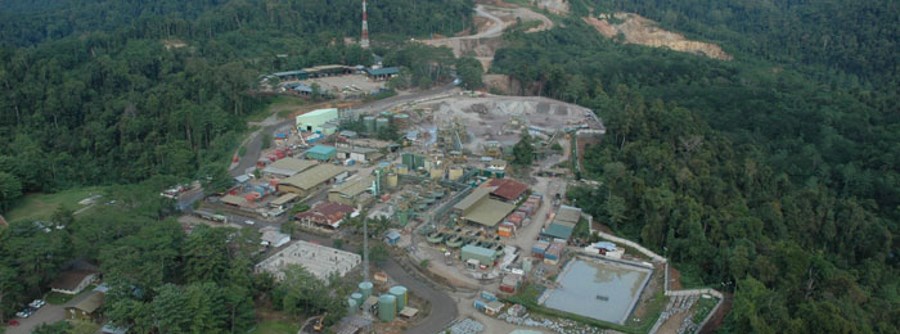
Gosowong gold/silver operation, Indonesia. Source: newcrest.com.au
Part of Newcrest’s Gosowong mine complex, the Toguraci mine is located on Halmahera Island, in Indonesia’s North Maluku Province, approximately 2,450 kilometres northeast of Jakarta. The Toguraci high-grade gold mine ranks eighth on this list with USD$760 t ore reserves value.

Processing facilities at Tambomayo mine, Peru. Source: sanmartinperu.pe
Recently commissioned by Buenaventura, the Tambomayo high-grade polymetallic mine produces gold, silver, lead and zinc. One tonne of Tambomayo’s ore reserves are worth USD$655, putting this mine in ninth place.
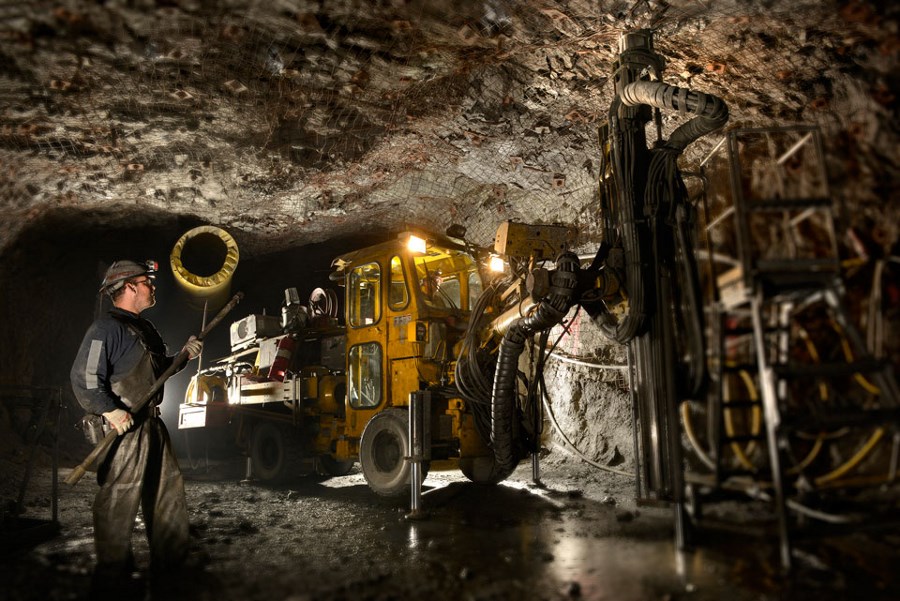
Greens Creek polymetallic mine, Alaska. Source: hecla-mining.com
Hecla’s Greens Creek polymetallic mine is located in Southeast Alaska. The Greens Creek orebody contains silver, zinc, gold and lead, and lies within the Admiralty Island National Monument. Accessible by boat and served by 21 kilometres of road, the project consists of the mine, an ore concentrating mill, a dry stacked tailings facility, a ship-loading facility, camp facilities and a ferry dock. Greens Creek is one of the largest and lowest-cost primary silver mines in the world, and is the cash-generating engine for Hecla. Greens Creek mine book-ends our list of top 10 mining operations handling the most expensive tonnes of ore.
 Sign up for Mining Intelligence and get rich insights about miners, juniors and projects. Our online tool puts rich data at your fingertips.
Sign up for Mining Intelligence and get rich insights about miners, juniors and projects. Our online tool puts rich data at your fingertips.
6 Comments
Jay
Yah, you forgot one GoldCorps red lake gold mine. The longhole stopes in the HGZ with all the dilution are between 1-3 Oz per tonne , and the cut and fill stopes range between 5-20oz per tonne. I see it on the prints every day
Chris
Hishikari? http://www.smm.co.jp/E/corp_info/domestic/hishikari/kyoten.html
Author
Thank you Chris. As stated in the text of the article “analysis is limited to mining operations where ore reserves have been calculated according to international standards adopted by major stock exchanges for public reporting of mineral exploration results”. Hishikari resources calculated using local Japan standards and thus it does not meet the criteria. And one more, Sumitomo does not clearly report grade-tonnage relationship for reserves/resources.
Steven Walker
You forgot all the high grade historic Au mines in California that haven”t even been drilled yet. Canadian mining companies like McEwen Mining and others….. are afraid of California and other jurisdictions it appears?
You can’t say you found all the high grade when you have NOT even looked for it for decades….just stuck in the low grade pit mentality!! Leadership skills are VERY lacking in all aspects around the globe.
When Mick Davis, another “legend” is given $4-6 billion to buy mines and can’t come up with even one to buy that is ECONOMIC, there are MAJOR problems with the structure of the industry. Certain “people” just know how to steal investors money through stock manipulation with the joke “43-101 instrument”.
Now “mining” is so #DESPERATEMINING, that it must run a raffle, #DISRUPTMINING to find properties to mine…since they have lost their way and now don’t have the correct leadership with the skills to go back underground it appears. They have their geologists telling them about rich Au properties…but, MANAGEMENT needs to be replaced with brighter minds, not millionaires and billionaires and the people with less motivation because they are comfortable now. The “legends” need to let others play, and quit hoarding the funding necessary to develop mines in a NEW direction instead of the same OLD crap model that has got all in costs at staggeringly high values. Just my opinion….
Leonardo A. C. Souza
You Forgot CBMM Niobium Mine in Brazil whose reserve is calculated for more than 500 years!
Pan African
Where is the mining companies operating in Africa.